The automotive landscape is undergoing a significant transformation as electric vehicles (EVs) gain traction in the market. In this thrilling new era, the Renault Scénic and VW ID.4 stand out as formidable contenders in the SUV segment. Both vehicles bring unique attributes and innovations to the table, making for an exciting comparison in terms of performance, range, and technology.
Renault Scénic vs VW ID.4 – Differences & prices compared
Both models have their strengths – but which one suits you more?
Compare performance, efficiency, price and space directly: Renault Scénic or VW ID.4?
Powertrains and Performance
The Renault Scénic is available in impressive configurations, offering options with up to 220 HP and 300 Nm of torque. With an acceleration time of just 7.9 seconds from 0-100 km/h, it demonstrates commendable performance for an SUV. The Scénic boasts two variants, catering to diverse driving needs: the 170 HP model with a range of approximately 420 km and the 220 HP variant capable of achieving a commendable 598 km, backed by a smooth automatic transmission and front-wheel drive. Its power efficiency is notable, consuming just between 16.7 kWh and 17.6 kWh per 100 km.
On the other hand, the VW ID.4 raises the stakes with a range of power outputs. The ID.4 can be configured to deliver between 170 HP and a robust 340 HP, catering to varying preferences for both performance and efficiency. The most powerful ID.4 model excels in acceleration, with a 0-100 km/h time of just 5.4 seconds. Furthermore, the ID.4 showcases an impressive electric range of up to 572 km and maintains a competitive energy consumption ranging from 15.8 to 16.8 kWh per 100 km.
Design and Dimensions
The Renault Scénic scores high on practicality with its spacious interior, providing adequate comfort for families and long trips. With a length of 4470 mm, a width of 1864 mm, and a height of 1571 mm, it delivers ample room for passengers and luggage alike. The boot capacity is impressive, offering a generous 545 liters.
Conversely, the VW ID.4 typically measures slightly larger at a length ranging from 4582 to 4584 mm, a width of 1852 mm, and a height of up to 1634 mm. Its trunk capacity is competitive as well, at 543 liters. Despite its larger dimensions, the ID.4 is designed to maximize interior space, ensuring comfort for all passengers.
Technological Innovations
Both vehicles focus heavily on innovation, ensuring that drivers have access to modern technology and safety features. The Renault Scénic offers a user-friendly infotainment system complete with driver assistance features. With a low environmental impact, its CO2 efficiency class is rated 'A', solidifying its appeal as an eco-friendly option.
The VW ID.4 focuses on connectivity and smart technology integration, including features like over-the-air updates and an expansive touchscreen display, positioning itself as a highly modern SUV. Its CO2 efficiency class is also rated 'A', emphasizing its commitment to sustainable driving.
Conclusion: Choosing Your Electrifying Adventure
In the battle between the Renault Scénic and VW ID.4, each SUV brings distinct characteristics that appeal to different types of drivers. The Scénic is ideal for those looking for a practical family vehicle with commendable electric range and efficiency, while the ID.4 stands out for its performance and advanced technological features. As electric vehicles revolutionize the automotive industry, the choice between these two impressive SUVs ultimately comes down to individual preferences and driving needs.
Video - VW ID.4
Here’s where it gets real: The technical differences in detail
Costs and Efficiency:
Price and efficiency are key factors when choosing a car – and this is often where the real differences emerge.
VW ID.4 has a minimal advantage in terms of price – it starts at 34600 £, while the Renault Scénic costs 34600 £. That’s a price difference of around 56 £.
In terms of energy consumption, the advantage goes to the VW ID.4: with 15.60 kWh per 100 km, it’s hardly perceptible more efficient than the Renault Scénic with 16.60 kWh. That’s a difference of about 1 kWh.
As for range, the Renault Scénic performs barely noticeable better – achieving up to 598 km, about 29 km more than the VW ID.4.
Engine and Performance:
Power, torque and acceleration are the classic benchmarks for car enthusiasts – and here, some clear differences start to show.
When it comes to engine power, the VW ID.4 has a clearly perceptible edge – offering 340 HP compared to 218 HP. That’s roughly 122 HP more horsepower.
In acceleration from 0 to 100 km/h, the VW ID.4 is clearly quicker – completing the sprint in 5.40 s, while the Renault Scénic takes 7.90 s. That’s about 2.50 s faster.
In terms of top speed, the VW ID.4 performs slight better – reaching 180 km/h, while the Renault Scénic tops out at 170 km/h. The difference is around 10 km/h.
There’s also a difference in torque: VW ID.4 pulls convincingly stronger with 679 Nm compared to 300 Nm. That’s about 379 Nm difference.
Space and Everyday Use:
Cabin size, boot volume and payload all play a role in everyday practicality. Here, comfort and flexibility make the difference.
Both vehicles offer seating for 5 people.
In curb weight, Renault Scénic is minimal lighter – 1822 kg compared to 1975 kg. The difference is around 153 kg.
In terms of boot space, the Renault Scénic offers barely noticeable more room – 545 L compared to 543 L. That’s a difference of about 2 L.
In maximum load capacity, the Renault Scénic performs minimal better – up to 1670 L, which is about 95 L more than the VW ID.4.
When it comes to payload, VW ID.4 slight takes the win – 551 kg compared to 518 kg. That’s a difference of about 33 kg.
Who comes out on top?
Overall, the VW ID.4 shows itself to be leaves the rival little chance and secures the title of DriveDuel Champion.
It convinces with the more balanced overall package and proves to be the more versatile choice for everyday use.
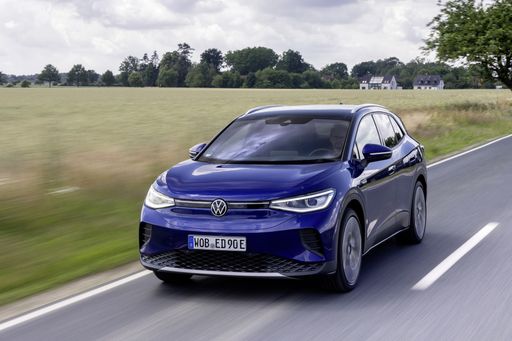 @ Volkswagen AG / VW Media
@ Volkswagen AG / VW Media
VW ID.4
Renault Scénic
The Renault Scénic is a quietly clever family MPV that balances everyday practicality with unexpected flair, offering a roomy, flexible cabin that makes school runs and weekend escapes less of a chore. It won't dazzle like a sports car, but its composed ride, sensible tech and thoughtful storage solutions make it a superbly pragmatic choice for buyers who prefer substance with a wink.
details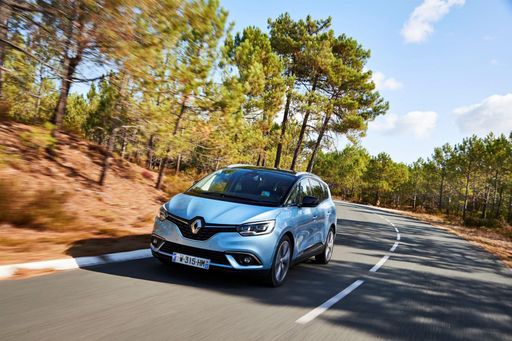 @ Renault Group Media
@ Renault Group Media
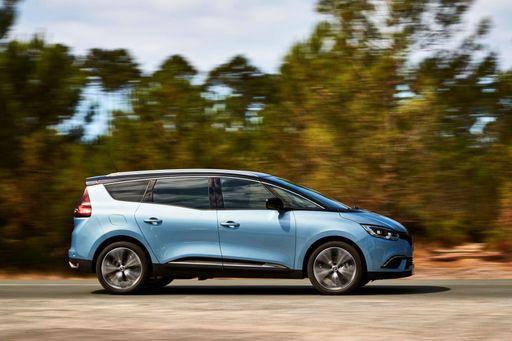 @ Renault Group Media
@ Renault Group Media
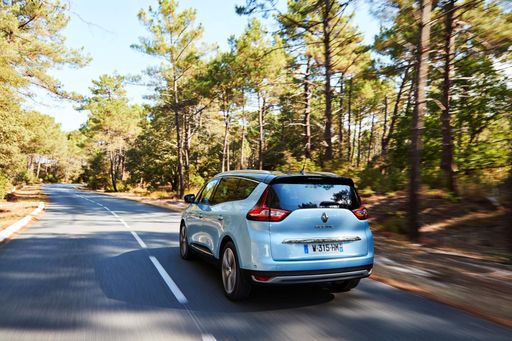 @ Renault Group Media
@ Renault Group Media
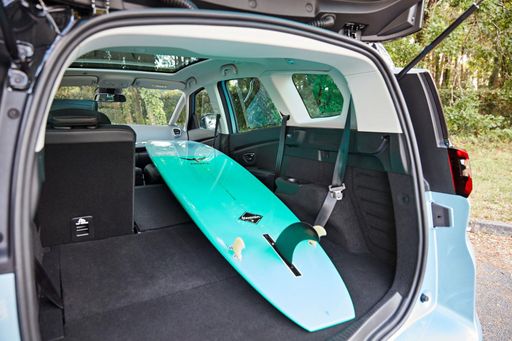 @ Renault Group Media
@ Renault Group Media
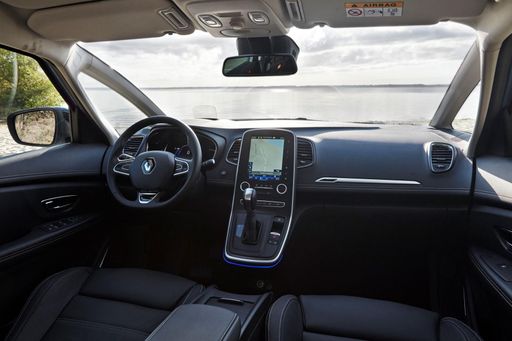 @ Renault Group Media
@ Renault Group Media
VW ID.4
The VW ID.4 is a calm, roomy electric SUV that turns everyday driving into a quietly confident experience, its practical packaging and smooth manners tailored perfectly for family life. Volkswagen's solid build and intuitive interior tech mean you get electric practicality without the sci‑fi theatrics, making the ID.4 a sensible, surprisingly likable choice for most buyers.
details @ Volkswagen AG / VW Media
@ Volkswagen AG / VW Media
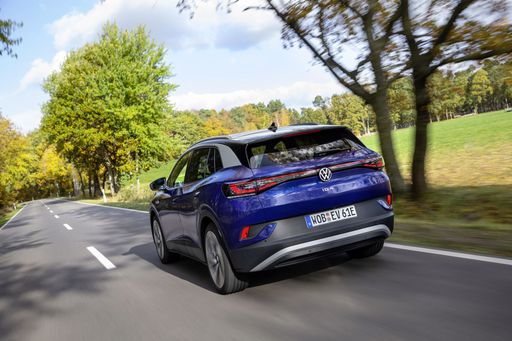 @ Volkswagen AG / VW Media
@ Volkswagen AG / VW Media
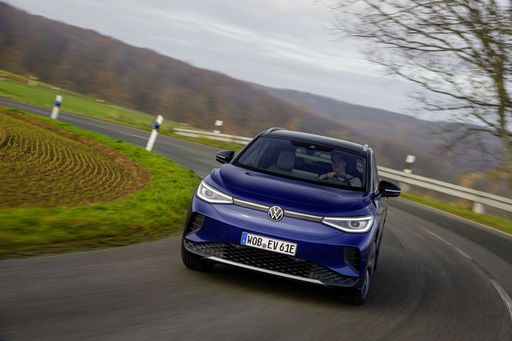 @ Volkswagen AG / VW Media
@ Volkswagen AG / VW Media
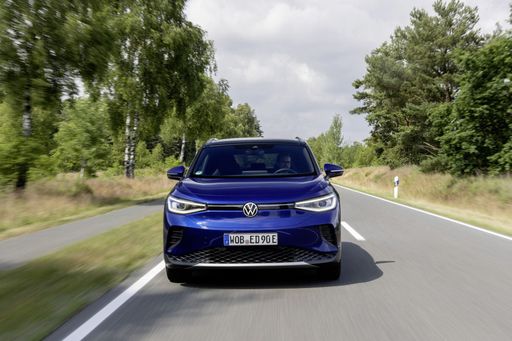 @ Volkswagen AG / VW Media
@ Volkswagen AG / VW Media
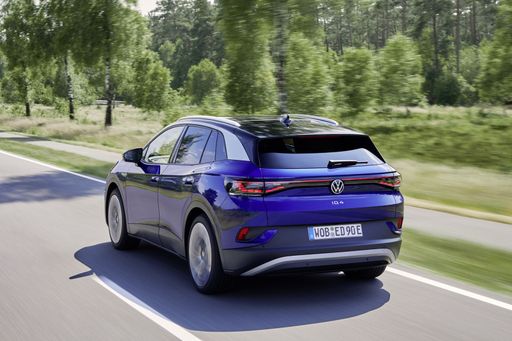 @ Volkswagen AG / VW Media
@ Volkswagen AG / VW Media
 @ Volkswagen AG / VW Media
@ Volkswagen AG / VW Media
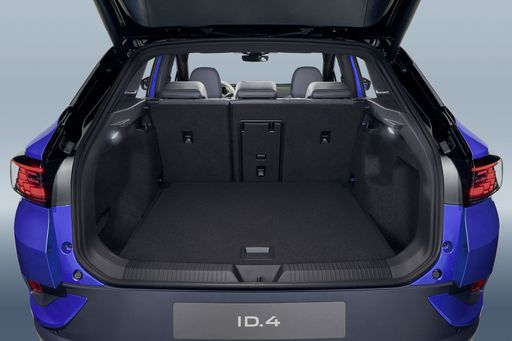 @ Volkswagen AG / VW Media
@ Volkswagen AG / VW Media
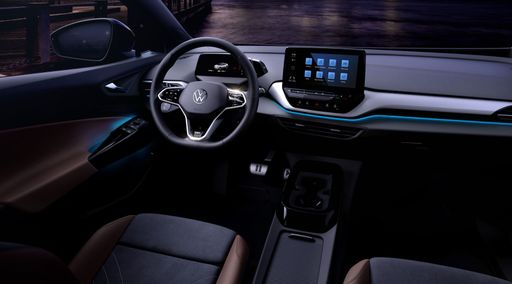 @ Volkswagen AG / VW Media
@ Volkswagen AG / VW Media
 @ Renault Group Media
@ Renault Group Media
|
 @ Volkswagen AG / VW Media
@ Volkswagen AG / VW Media
|
|
|
|
Costs and Consumption |
|
|---|---|
|
Price
34600 - 44000 £
|
Price
34600 - 47200 £
|
|
Consumption L/100km
-
|
Consumption L/100km
-
|
|
Consumption kWh/100km
16.6 - 17.5 kWh
|
Consumption kWh/100km
15.6 - 17 kWh
|
|
Electric Range
420 - 598 km
|
Electric Range
356 - 569 km
|
|
Battery Capacity
-
|
Battery Capacity
52 - 77 kWh
|
|
co2
0 g/km
|
co2
0 g/km
|
|
Fuel tank capacity
-
|
Fuel tank capacity
-
|
Dimensions and Body |
|
|---|---|
|
Body Type
SUV
|
Body Type
SUV
|
|
Seats
5
|
Seats
5
|
|
Doors
5
|
Doors
5
|
|
Curb weight
1822 - 1927 kg
|
Curb weight
1975 - 2248 kg
|
|
Trunk capacity
545 L
|
Trunk capacity
543 L
|
|
Length
4470 mm
|
Length
4582 - 4584 mm
|
|
Width
1864 mm
|
Width
1852 mm
|
|
Height
1571 mm
|
Height
1619 - 1634 mm
|
|
Max trunk capacity
1670 L
|
Max trunk capacity
1575 L
|
|
Payload
514 - 518 kg
|
Payload
511 - 551 kg
|
Engine and Performance |
|
|---|---|
|
Engine Type
Electric
|
Engine Type
Electric
|
|
Transmission
Automatic
|
Transmission
Automatic
|
|
Transmission Detail
Reduction Gearbox
|
Transmission Detail
Reduction Gearbox
|
|
Drive Type
Front-Wheel Drive
|
Drive Type
Rear-Wheel Drive, All-Wheel Drive
|
|
Power HP
170 - 218 HP
|
Power HP
170 - 340 HP
|
|
Acceleration 0-100km/h
7.9 - 8.6 s
|
Acceleration 0-100km/h
5.4 - 9 s
|
|
Max Speed
150 - 170 km/h
|
Max Speed
160 - 180 km/h
|
|
Torque
280 - 300 Nm
|
Torque
310 - 679 Nm
|
|
Number of Cylinders
-
|
Number of Cylinders
-
|
|
Power kW
125 - 160 kW
|
Power kW
125 - 250 kW
|
|
Engine capacity
-
|
Engine capacity
-
|
General |
|
|---|---|
|
Model Year
2025
|
Model Year
2023 - 2025
|
|
CO2 Efficiency Class
A
|
CO2 Efficiency Class
A
|
|
Brand
Renault
|
Brand
VW
|
What drive types are available for the Renault Scénic?
Available configurations include Front-Wheel Drive.
The prices and data displayed are estimates based on German list prices and may vary by country. This information is not legally binding.
